The Fountainhead

Brief Synopsis
Cast & Crew
King Vidor
Gary Cooper
Patricia Neal
Raymond Massey
Kent Smith
Robert Douglas
Film Details
Technical Specs

Synopsis
Visionary student architect Howard Roark strives to break away from the classically inspired designs of ordinary architects. His unwillingness to compromise, despite the advice of his ambitious friend, Peter Keating, causes him to be kicked out of school, but earns him a job with Henry Cameron, a talented architect, who also believes that form must follow function. After Cameron is completely destroyed by the system, Roark sets up his own company, but gets only an occasional job. Roark is offered a commission to build a bank building, but when he learns that the bank wants him to add some classical touches, he rejects the commission, to the secret delight of Ellsworth Toohey, the architectural critic at the Bulletin newspaper. Gail Wynand, the owner of the Bulletin, holds a controlling interest in the bank, and when he asks Toohey to suggest a replacement for Roark, Toohey suggests the now successful Peter Keating. Wynand is not impressed with Peter's work and consults with Dominique Francon, the paper's other architectural writer, whose father is Peter's partner. Even though Peter is Dominique's fiancé, she refuses to recommend him and her ferocious independence so impresses Wynand that he falls in love with her. Later, at a dinner party, Wynand offers the commission to Peter if he will break his engagement to Dominique. After Peter accepts the commission and leaves Wynand's apartment, Wynand proposes to Dominique, but, saying that she is incapable of feeling, Dominique turns him down. She then leaves New York for her father's country house. There she meets Roark, who has taken a job working at a nearby quarry. Although they never exchange names, they are instantly drawn to each other. After a brutal sexual encounter with Dominique, Roark returns to the city, where a man named Enright offers him work. At Toohey's suggestion, the Bulletin starts a campaign against the Enright Building. Dominique, impressed by the design, begs Wynand to call off the campaign, and when he refuses, she resigns. The building completed, Enright throws a party in Roark's honor, and for the first time, Dominique learns the identity of her mysterious lover. Later, she visits Roark in his apartment and tells him that even though she loves him, she will never see him again as she cannot bear to see him destroyed. Roark admits that he returns her love and adds that he will wait for her until she has learned not to be afraid of the world. Immediately after leaving Roark, Dominique asks Wynand to marry her. Slowly, Roark gets commissions for small buildings, farms, gas stations and homes from people who have seen his work and like it. Eventually Wynand asks Roark to build a country home for him and Dominique. When Dominique learns who is designing the house, she reminds Wynand of the Bulletin's campaign against Roark, but Wynand is charmed by the architect, and he becomes a frequent guest of the couple. Meanwhile, Peter has started to lose business. He begs Roark to help him design the Cortlandt Homes, a housing project, and Roark, realizing that he would never be able to get his own design past Toohey, agrees on condition that Peter promise it will be built exactly as he specifies. Peter does not have the strength of character to enforce Roark's wishes, and Roark returns from a vacation to witness the construction of a greatly altered building. With Dominique's help, he blows up the project and then admits his guilt. Wynand's is the only paper to stand behind Roark, and Toohey and his cronies are able to whip up public opinion against both Roark and Wynand. In order to save his paper, Wynand is forced to condemn his friend. Despite all of Toohey's efforts, however, Roark's impassioned speech in favor of individualism causes the jury to acquit him. Enright then buys the Cortlandt project and gives it to Roark to build as he chooses. Wynand offers Roark a contract to design the Wynand Building and, after the contract is signed, kills himself. Roark designs the Wynand Building to be the tallest in the city and finally marries Dominique.

Director

King Vidor
Cast

Gary Cooper

Patricia Neal
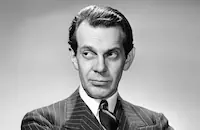
Raymond Massey

Kent Smith

Robert Douglas

Henry Hull
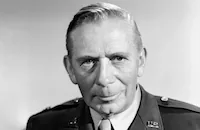
Ray Collins

Moroni Olsen
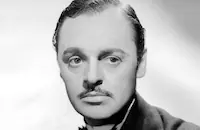
Jerome Cowan

Paul Harvey
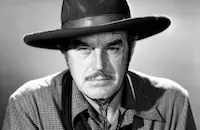
Harry Woods
Bob Alden
Paul Stanton

Roy Gordon
Tristram Coffin

Ann Doran
Ruthelma Stevens
Isabel Withers
Almira Sessions

Tito Vuolo
Bill Haade
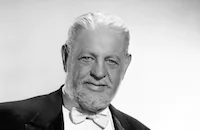
Thurston Hall
Dorothy Christy

Harlan Warde

Jonathan Hale
Frank Wilcox

Douglas Kennedy

Pierre Watkin
Selmer Jackson

John Doucette

John Alvin
Fred Kelsey
George Sherwood
Paul Newlan
Lois Austin
Josephine Whittell
Bill Dagwell
Charles Trowbridge

Russell Hicks
Raymond Largay
Charles Evans
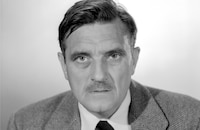
Morris Ankrum

Griff Barnett
G. Pat Collins
Creighton Hale
Philo Mccullough

Geraldine Wall
Lester Dorr
Gail Bonney
Crew
Milo Anderson
James Bell
Henry Blanke
Clayton Brackett
Martha Bunch
Robert Burks
Edward Carrere
Murray Cutter
Jack Daniels
Edwin Du Par
Earl Ellwood
Bud Friend
Oliver S. Garretson
Cliff Heard
John Holden
H. F. Koenekamp
William Kuehl
Richard Mayberry
William Mcgann
Rita Michaels
John Prettyman
Ayn Rand
Leonard South
Eric Stacey
Max Steiner
Johnny Wallace
David Weisbart
Perc Westmore
Gertrude Wheeler
Jack Woods

Photo Collections
Videos
Movie Clip





Trailer
Hosted Intro
Film Details
Technical Specs

Articles
The Fountainhead
No one who saw the film, however, could deny the sexual chemistry between Gary Cooper as Roark and Patricia Neal, in her second film role, as Dominique Francon, the strong-willed daughter of a renown architect. Off screen, Cooper and Neal embarked on a long, passionate affair during the making of this film, despite the fact that Cooper was 47 and married and Neal was only 22 years old. In the biography, Coop by Stuart M. Kaminsky (St. Martin's Press), director King Vidor said, "I remember the day we drove up to Fresno to do our location shooting for The Fountainhead. We met Patricia Neal there that night. It was the first time they had met. They went for each other right away. After dinner we never saw the two of them again except when we were shooting."
While there are various accounts of who originally initiated the film version of The Fountainhead, it's clear that neither Cooper nor Neal were the original choices for the lead roles. When the book first appeared in print, Barbara Stanwyck connected strongly with the central characters and strongly urged Warner Bros. mogul Jack Warner to purchase the rights. She even approached the author about appearing in the film version but Rand told Stanwyck that she had written the Dominique character for Greta Garbo. Nevertheless, Warner purchased the book, Mervyn LeRoy agreed to direct, and Humphrey Bogart was cast as Roark and Stanwyck as Dominique. Unfortunately for Stanwyck, the project, which was being prepared during the final days of World War II, was delayed due to a wartime restriction. The climactic scene where Roark dynamites his creation was forbidden on the grounds that demolishing scarce housing stock amounted to despoiling strategic materials. After the war was over and the restrictions lifted, Warner rethought the casting and direction, replacing his original choices with Cooper and Neal and King Vidor (as director). Learning she had lost the role to a younger actress, Stanwyck fired off an angry telegram to Warner expressing her bitter disappointment and terminated her contract with the studio.
Stanwyck wasn't the only one unhappy with the casting. Vidor recalled, "I didn't think that Cooper was well cast but he was cast before I was. I thought it should have been someone like Bogart, a more arrogant type of man. But after I forgot all that and saw it several years later I accepted Cooper doing it." Even Coop himself was uneasy about his performance in the film and would often say in interviews about The Fountainhead, "Boy, did I louse that one up."
Casting aside, there were other compromises made on the way to production. Vidor contacted Frank Lloyd Wright about executing Roark's designs for the film and the famous architect agreed for his standard 10 percent commission based on the entire budget of the film. Jack Warner balked when he heard this news and forbid Vidor from further negotiations with Wright, fearing a potential lawsuit if they used Wright's designs. Another potential problem involved the Breen Office, which objected to the frantic coupling of Cooper and Neal on-screen and had the writers change the erotic one-night-stand between Roark and Dominique to a rape scene.
The Fountainhead, despite its shortcomings as a film adaptation of the book, remains a fascinating curiosity in the history of American film. Its righteous view of capitalism and morality place it firmly in the pantheon of right-wing conservative cinema while the on and off-screen relationship between Cooper and Neal reminds one that life imitates art so often in the film industry.
Director: King Vidor
Producer: Henry Blanke
Screenplay: Ayn Rand
Cinematography: Robert Burks
Editor: David Weisbart
Art Direction: Edward Carrere
Music: Max Steiner
Cast: Gary Cooper (Howard Roark), Patricia Neal (Dominique), Raymond Massey (Gail Wynand), Kent Smith (Peter Keating), Robert Douglas (Ellsworth Toohey).
BW-113m. Closed Captioning. Descriptive Video.
by Jeff Stafford

The Fountainhead
Gary Cooper & Patricia Neal in The Fountainhead on DVD
The Fountainhead is a visual masterpiece. Director King Vidor interprets Rand's intellectual ideas with complimentary images of power and vitality not seen since the days of silent expressionism. Rand's barrage of propaganda-like position speeches are reinforced by visual dynamics that would leave Leni Riefenstahl breathless with envy: Not one second of the film reminds us of real people living in a recognizable world, and Ayn Rand's one-sided tirades and disturbing rhetoric have to be heard to be believed: "The world is perishing from an orgy of self-sacrificing." But the picture is weirdly fascinating.
Synopsis: Architect Howard Roark (Gary Cooper) is blocked from practicing his art by unimaginative clients and predatory abiters of public taste like Ellsworth Toohey (Robert Douglas). He meets his destined mate in Dominique Francon (Patricia Neal), a woman of impeccable taste who despairs of the fate of real beauty and genius in the 'mongrelized' modern world. She's attracted to Roark but rejects his love as a perverse way of convincing him not to destroy himself by going up against the coarse will of the mob. Howard prevails by finding one client courageous enough to embrace his genius without interference. He also makes a fast friend and partial convert of multimillionaire publisher Gail Wynand (Raymond Massey), who has entered into a loveless marriage with Dominique and hires Roark to build a house to honor her. Roark's ideals are put to the test when he secretly designs a complex housing project for his former college friend Peter Keating (Kent Smith), now a no-talent hack. Keating's duplicitous clients change the building's plans and corrupt its integrity. Roark's solution to the problem: Dynamite.
The Fountainhead is an emotionally powerful piece of cinematic insanity, a movie that bears careful watching yet elicits gales of laughter when shown at festivals and revivals. Gary Cooper and Patricia Neal's overheated, intellectually perverse romance is undeniably entertaining, and match Ayn Rand's personal 'take no prisoners' approach to life and love. It is said that Rand once initiated an affair with her best friend's husband by simply announcing to them both, up front, that she wanted him and that the affair was going to happen. The characters of The Fountainhead continually express their deepest inner needs, and without the slightest restraint.
The Fountainhead isn't strictly a movie; it's a presentation of a radical social philosophy using a soap opera format; it's a lecture fashioned into a fairy tale. The story serves Rand's didactic purpose and her characters represent opposing positions in her argument. A dramatic character is, of course, an artificial construct, and writers strive to make them resemble convincingly real people. When an author places a theme or a message within a character, it's usually reduced to hints and glimpses. Ayn Rand's characters are almost exclusively interior themes and messages; it's as if she reached down the throats of her characters and pulled them inside out. They look like people, but they're walking ideas and arguments.
Howard Roark and company might resemble Olympian gods warring on a philosophical plane, but even the Greek gods had differences of opinion. In the world of Ayn Rand there is only Roark's Super Man and an array of lesser humans that support him even when they oppose him. The script is a rigged debate with the 'correct' side writing both halves of the argument. Ellsworth Toohey, Gail Wynand and Peter Keating speak almost exclusively in hateful, false and often hilariously idiotic boners: "A man abler than his brothers insults them by implication. He must not aspire to any virtue which cannot be shared." "I want you to know that I have very little respect for anything on Earth." "Howard, I'm a parasite. I've been a parasite all my life."
Faced with such paper lions, Roark has only to state a few reasoned opinions to come off as a relative genius. The Fountainhead is definitely propagandistic in that its apparent conflict is an illusion. The only real conflict is between the author and the viewer. "I'm right and you must agree with me," Ms. Rand argues. And she has the cinematic might of King Vidor and the magnetically persuasive Gary Cooper to back her up. When it comes time to hear a dissenting opinion, it's always obvious rubbish from an unworthy spokesman. John Doucette, a specialist in moronic western bad guys, plays the uncouth consulting architect that desecrates Roark's Courtland Towers project. Doucette grouses in his best lynch-mob voice, "We wanna express our creativity too."
The Fountainhead is a technically sophisticated update of the style previously seen in Soviet agit-prop movies. Everything exists to further the author's argument. At the center is Howard Roark, a granite-hard man of unmatched virility. Proud and unbroken when forced to give up his New York office, Roark works an air cutter in a marble quarry. The sight of his sweaty arm instantly arouses the interest of the soul-sick heroine; she hallucinates the phallic jackhammer arm in her mirror. Howard is integrity personified, a man of few words but forceful in action. It's a perfect role for Gary Cooper, who cannot possibly have grasped the full meaning of Ayn Rand's book; we're told that even King Vidor asked for authorial clarifications for how the characters should behave.
Around Howard orbit lesser, flawed specimens, all carefully positioned to enhance his superiority. Architectural mentor Henry Cameron (Henry Hull) has Roark's ideals but lacks his stamina and succumbs to alcoholism. "A building's shape must serve its function" rails Cameron, simply repeating the mantra of an earlier school of German design. Peter Keating is the sell-out version of Howard Roarke, an architect without convictions who asks Dominique to marry him to become her father's partner. Keating's own incompetence and cowardice eventually catch up with him. In the book, Peter Keating would rather paint but is forced into architecture by a domineering mother. He ditches the true love of his life to pursue his career. By contrast, Howard appears to have no relatives. His individualist stance forbids him from depending on others. Anyone who wants to be a part of his life has to come to him, on the same terms that he imposes on his clients.
Gail Wynand is the warped alternative to Howard Roark, a wildly successful tycoon who made his fortune by publishing a tabloid for the masses. Wynand openly expresses his contempt for his customers and cynically distorts the truth to increase his circulation. When Wynand is shown that his power is an illusion, his personality self-destructs. Architecture critic and rabble-rouser Ellsworth Toohey is a demagogue who uses Wynand's newspaper to generate a hateful campaign against Roark. His only philosophy is the destruction of the higher values that Roark represents. Toohey revels in his villainy, but Roark doesn't even acknowledge his existence.
Dominique Francon is introduced in the giddily symbolic act of destroying a statue. Her elevated consciousness has led her to a state of despair in which she perversely attempts to drag Howard down to save him from the dogs of society. Howard instead provides the sexual motivation that redeems Dominique. The Fountainhead's sexual politics are far removed from any kind of rational discussion. When asked why she included a rape scene in her idealized romance, Ayn Rand's response was, "If it was rape, it was rape by engraved invitation." Rand's model woman has lofty ideals but finds satisfaction by becoming the sex slave of the 'perfect' man: Her idea of devotion is to attempt suicide in the ruins of one of his buildings. The film's final image tops the sexually charged jackhammer and statue with a glorious vision, Dominique's ride to the stratosphere on Roark's towering .... edifice. It's an image out of H.G. Wells' The Food of the Gods: Like King Kong, Howard Roark has conquered the world.
Ayn Rand's philosophy is called Objectivism, and it begins with the proposition that the real world is physical in nature, not spiritual: Actions count, not feelings or faith. Controversial aspects include the idea that people are independent individuals and therefore not responsible for one another, and that altruism is a sham. Rand's ideas entered from outside the philosophical establishment and for years were ignored at the academic level, even when The Fountainhead became favored reading material in high school classrooms. It's now more popular than ever.
Director King Vidor gives The Fountainhead a modernistic sheen in keeping with its visionary ideals. Former effects cameraman Robert Burks makes many shots into thematic statements, often compressing information within the frame as one would design a silent movie image. The ambulance scene frames Henry Cameron and Howard Roark in front of a procession of New York buildings that seem like mourners at Cameron's funeral. In the marble quarry representing the masculine power of the Earth, Roark stares upward at the spectral figure of Dominique, silhouetted like a sacrificial offering. Roark works in tiny offices and shacks that contrast with the oversized meeting rooms, sterile apartments and business throne rooms that dominate the rest of the movie. The film's most difficult design task was the supposedly revolutionary works of Howard Roark, buildings so distinctive that anyone can tell who built them. These creations are represented by a parade of concept drawings with jutting profiles, inverted shapes and pointy protuberances. When the drawings dissolve to the completed buildings, architecturally-minded viewers usually laugh out loud at faux-futurism that wouldn't look out of place in a Duck Dodgers cartoon.
The Fountainhead wasn't treated kindly by critics and didn't do well in big urban areas, but the country as whole responded well to Gary Cooper as "Mr. Deeds Conquers the Humanists." The movie says that the unwashed masses are worthless, and proposes the discomforting thought that the inheritors of the Earth will be artisan-architects responsible to nothing but their own consciences. Audiences shocked at the idea that a zealot would resort to terrorism to achieve a goal, usually applaud when Howard Roark dynamites an entire skyscraper because it violates his personal ideals.
Warner DVD's disc of The Fountainhead replicates the clean B&W lines of Robert Burk's slick cinematography. The visuals combined with Max Steiner's beautiful score energize the screen, creating the best possible platform for Ayn Rand's dizzying dialogues. The final scene is a triumph of form over content, as Dominique Francon experiences sexual ecstasy on her way to the top of the world's tallest building.
In addition to a trailer, Warners' disc offers a featurette on The Making of The Fountainhead that sketches the printable facts on Ayn Rand's experience in Hollywood. It only touches on the intriguing philosophy that animates her Super Man Howard Roark character. Nothing less than a full book could do her arguments justice.
For more information about The Fountainhead, visit Warner Video. To order The Fountainhead, go to TCM Shopping.
By Glenn Erickson
Gary Cooper & Patricia Neal in The Fountainhead on DVD
Quotes
You must think very poorly of me.- Gail Wynand
No. In fact, I don't think of you at all.- Howard Roark
Trivia
Hoping this film would make her a star, Warner Bros cast a relative unknown, 22-year-old Patricia Neal, after considering and then rejecting Bette Davis, Ida Lupino and Barbara Stanwyck for the female lead.
Ayn Rand was furious when she heard that Howard Roark's speech at the trial was being trimmed, chiefly because it was considered long, rambling and confusing, especially to Gary Cooper who didn't understand it. She got the studio to make sure that the speech was untouched and in its entirety in the finished product.
Notes
Like Ayn Rand's novel, the film, which she also wrote, depicts her concern with the rights of the individual over the demands of society and expounds her belief that genius entitles the superior man to ignore moral and ethical constraints. The character of "Howard Roark" was ostensibly based on architect Frank Lloyd Wright. An September 18, 1945 Hollywood Reporter news item noted that Warner Bros. wanted to borrow Alan Ladd from Paramount to co-star in the film with Lauren Bacall, while a January 24, 1945 Hollywood Reporter news item reported that Mervyn LeRoy was to direct the film with stars Humphrey Bogart and Barbara Stanwyck. According to a February 19, 1948 New York Times article, Harriet Frank, Jr. was hired to adapt Rand's novel for the screen, but only Rand received screenplay credit. Among the actresses considered for the lead were Bette Davis and Greta Garbo, according to a June 21, 1948 Hollywood Reporter news item. A modern source reports that Barbara Stanwyck had urged Warner Bros. to purchase Rand's novel in 1943. M-G-M star Clark Gable, who had wanted to play the role of "Howard Roark," later told Rand that he had complained to the studio for not protecting his interests by buying the novel for him. The quarry scenes were shot on location near Fresno, CA, according to a July 13, 1948 Hollywood Reporter news item. Modern sources add the following information about the film: Ayn Rand agreed to write the script providing that nothing would be changed without her permission. Director King Vidor wanted Frank Lloyd Wright to design the film, but his fee of $250,000 was not approved by Jack L. Warner. Edward Carrere's sets were scorned by the architectural press. Interiors critic George Nelson, as quoted in a modern source reprint, called the sets the "silliest travesty of modern architecture that has yet hit the film," and "a total perversion of formal and structural elements."

Miscellaneous Notes
Released in United States 1949
Released in United States March 1976
Release in USA July 2, 1949.
Released in United States 1949
Released in United States March 1976 (Shown at FILMEX: Los Angeles International Film Exposition (Special Programs - The Americas: A National Portrait) March 18-31, 1976.)















